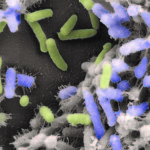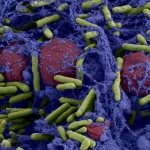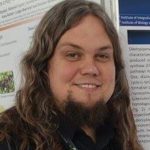Link to Pubmed [PMID] – 33077930
Link to HAL – pasteur-03217183
Link to DOI – 10.1038/s41559-020-01299-7
Nature Ecology & Evolution, 2020, 4 (12), pp.1661-1672. ⟨10.1038/s41559-020-01299-7⟩
The transition between cell envelopes with one membrane (Gram-positive or monoderm) and those with two membranes (Gram-negative or diderm) is a fundamental open question in the evolution of Bacteria. Evidence of the presence of two independent diderm lineages, the Halanaerobiales and the Negativicutes, within the classically monoderm Firmicutes has blurred the monoderm/diderm divide and specifically anticipated that other members with an outer membrane (OM) might exist in this phylum. Here, by screening 1,639 genomes of uncultured Firmicutes for signatures of an OM, we highlight a third and deep branching diderm clade, the Limnochordia, strengthening the hypothesis of a diderm ancestor and the occurrence of independent transitions leading to the monoderm phenotype. Phyletic patterns of over 176,000 protein families constituting the Firmicutes pan-proteome identify those that strongly correlate with the diderm phenotype and suggest the existence of new potential players in OM biogenesis. In contrast, we find practically no largely conserved core of monoderms, a fact possibly linked to different ways of adapting to repeated OM losses. Phylogenetic analysis of a concatenation of main OM components totalling nearly 2,000 amino acid positions illustrates the common origin and vertical evolution of most diderm bacterial envelopes. Finally, mapping the presence/absence of OM markers onto the tree of Bacteria shows the overwhelming presence of diderm phyla and the non-monophyly of monoderm ones, pointing to an early origin of two-membraned cells and the derived nature of the Gram-positive envelope following multiple OM losses.









